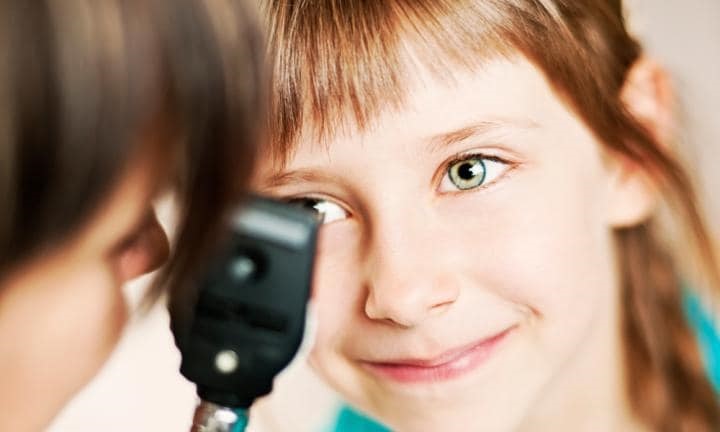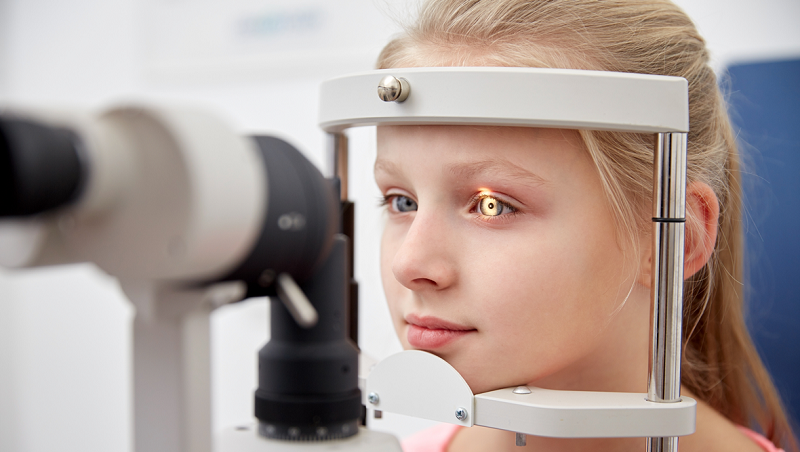
Visual problems in children how to know if your child needs glasses?
Visual problems in children are difficult to detect. Currently, it is estimated that 3 out of every 10 children in the world have a vision problem, according to data from the Visual Impact Institute. And if in your family these sufferings are hereditary, you probably have already noticed them in your children or are more aware of it; but if it happens to them like me, they may be more lost than a seagull in Bolivia.
With the school year at the door, it is better to take advantage of the little that is left of vacations to do all those last-minute things that we love doing to American, like going to the doctor, for example.
Maybe you think: “An eye doctor/ophthalmologist for my son? … Nah!” However, after knowing that 80% of a child’s learning is acquired in a visual way, you can assume that perhaps your children’s failed tests will be they must have some eye problem.
Worldwide, it is estimated that 30% of children have vision problems.
How to identify visual problems in children?

In below we will mention some points that parents should take into account to check if their children have visual problems:
- Usually, you sit too close to the TV or the blackboard.
- Too close the objects to the face or squint to see.
- He has headaches in the front.
- He rubs his eyes constantly.
- They have a sensitivity to light more than normal.
- If you practice some sport, you have complications to catch objects even if you do not have motor problems.
- Loses interest in activities that require visual effort.
- His eyes are red and watery.
If you have one or more of these symptoms in your children, it is best to go periodically with an ophthalmologist.
Recommended age for a review
It is recommended to take children with an ophthalmologist from 3 years of age, to check if they have visual problems that should be addressed or corrected.
After the first consultation, remember to perform a vision exam 1 or 2 times a year, as the visual problems in children continue to develop.
After 3 years, it is advisable to do semester tests, since the visual system of the children continues in development.
Visual problems in children are more common than you think
Although we can always be exposed to any possibility and, in this case to more severe visual problems, we must take into account the most common conditions in children to have a point of comparison in case of detecting something unusual in the eyes of the children.
Myopia: is a refractive problem where the image is formed in front of the retina, causing problems to see things from a distance, but not closely.
Hyperopia: patients with this problem have a problem in which the image is formed behind the retina, resulting in them seeing better from a distance than from near. Many times it is accompanied by visual fatigue.
Astigmatism: arising from a small deformity of the surface of the cornea that results in an unclear approach to objects and distortion of near and far objects. In the case of astigmatism, it is important to perform periodic eye exams in children, since only one eye can compensate for the vision of the other, which may seem “normal”, but over time the problem can be complicated.
What type of lenses to choose to counteract visual problems in children?
If after going to the specialist you came to the conclusion that your child does need glasses, maybe you will ask yourself: which ones to choose?
Here are some tips:
The professional relations manager of Essilor recommends that you look for frames made of safe and fun flexible materials, always accompanied by a resistant ophthalmic lens.
Likewise, he mentions that the ideal material for any patient is polycarbonate material, because it is flexible and resistant to impact – you never know how many times those lenses will accidentally hit the ground.
He adds that it is important to encourage the use of sunglasses or photochromic micas with protection against UV radiation and harmful ultraviolet light. Remember that only 80% of all harmful exposure to UV occurs before age 18.
Another suggestion for visual problems in children is to reduce the time they spend in front of any kind of electronic device. According to the American Academy of Pediatrics, a child under 2 years of age could spend a maximum of 30 minutes a day; children aged 3 to 5 years, 1 hour a day, children over 6 years, no more than 2 hours.
